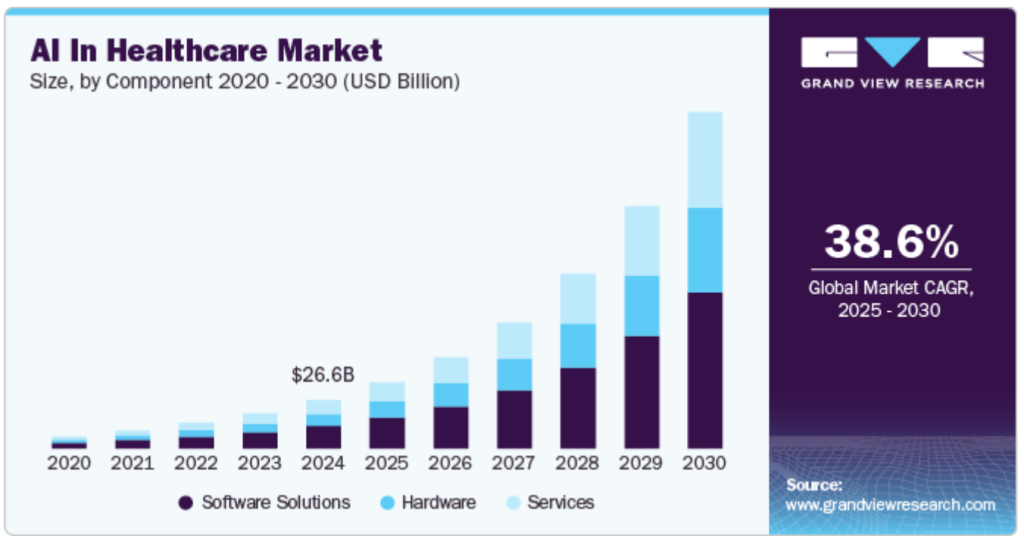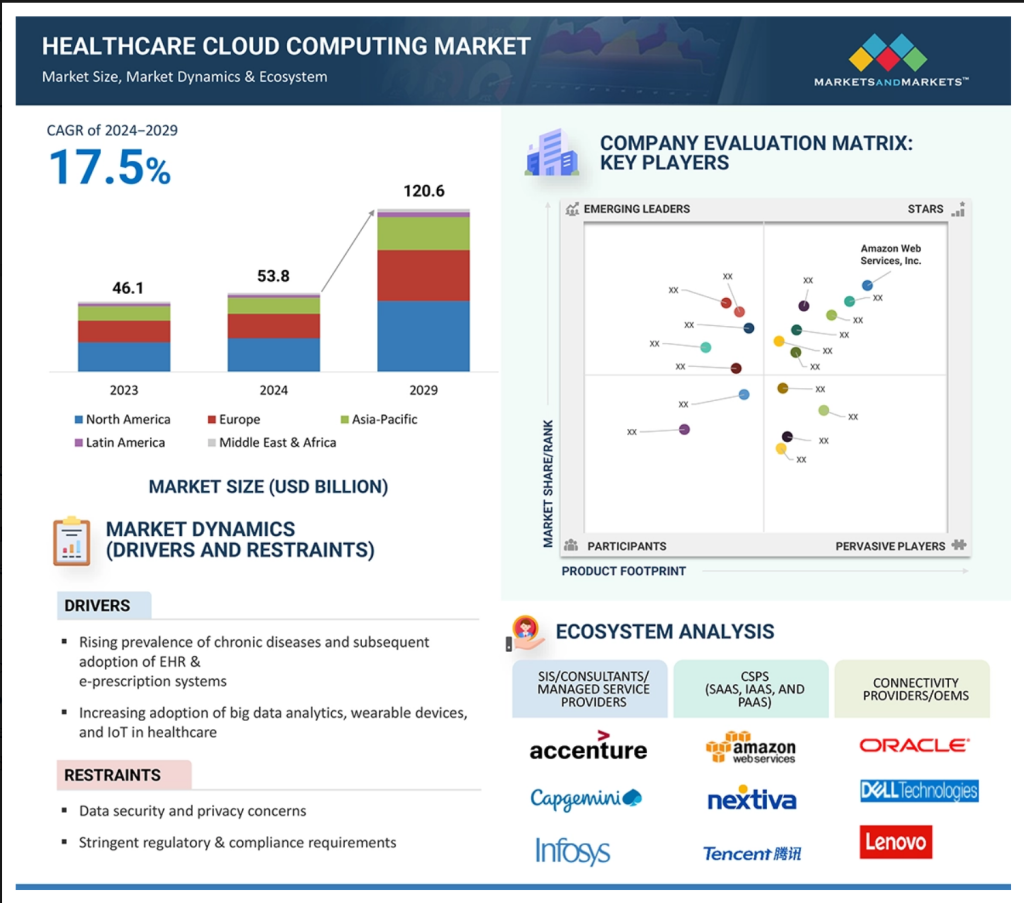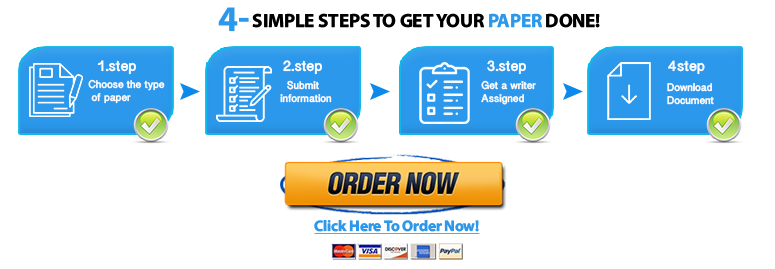Last updated on June 24th, 2025 at 08:27 am
Post a brief description of general healthcare technology trends, particularly related to data/information you have
Discussion: Healthcare Information Technology Trends
Throughout history, technological advancements have appeared for one purpose before finding applications elsewhere that lead to spikes in its usage and development. The internet, for example, was originally developed to share research before becoming a staple of work and entertainment. But technology—new and repurposed—will undoubtedly continue to be a driver of healthcare information. Informaticists often stay tuned to trends to monitor what the next new technology will be or how the next new idea for applying existing technology can benefit outcomes.
In this Discussion, you will reflect on your healthcare organization’s use of technology and offer a technology trend you observe in your environment.
To Prepare:
- Reflect on the Resources related to digital information tools and technologies.
- Consider your healthcare organization’s use of healthcare technologies to manage and distribute information.
- Reflect on current and potential future trends, such as use of social media and mobile applications/telehealth, Internet of Things (IoT)-enabled asset tracking, or expert systems/artificial intelligence, and how they may impact nursing practice and healthcare delivery.
By Day 3 of Week 6
Post a brief description of general healthcare technology trends, particularly related to data/information you have observed in use in your healthcare organization or nursing practice. Describe any potential challenges or risks that may be inherent in the technologies associated with these trends you described. Then, describe at least one potential benefit and one potential risk associated with data safety, legislation, and patient care for the technologies you described. Next, explain which healthcare technology trends you believe are most promising for impacting healthcare technology in nursing practice and explain why. Describe whether this promise will contribute to improvements in patient care outcomes, efficiencies, or data management. Be specific and provide examples.
Expert Answer and Explanation
Trends in Informatics Technology
The healthcare technology is revolutionizing the delivery of health services by providing providers with the necessary tools that support the delivery of care. With the emerging trends in use of informatics technology, patients are benefitting from access to optimal care.
General Healthcare Technology Trends
The evolution of the healthcare technology is seen in various trends including the use of the mobile health apps, and telhealth technology to optimize care access and delivery. The technologies powered by the Internet of Things (IoTs) like wearable devices are easing and enhancing the delivery of preventive care by providing real-time data that inform clinical intervention decisions. Providers are equally leveraging the Electronic Health Records (EHRs) to capture and access patients’ data, and share this data with other members of the interprofessional team (Zhang & Saltman, 2022).
Out of the general healthcare trends I have observed, telhealth and EHRs are the predominant technologies in my healthcare organization. As a tool, the EHR system allows providers to store and retrieve patients’ data, and share it with colleagues. Conversely, the telhealth system, which may involve the use of virtual communication platform, facilitates provider-patient interaction, allowing patients to remotely access health services.
The Concerns or Challenges tied to the Technologies Associated with the Trends
While the use of the identified technological trends translates to the improvement in decision-making outcomes in clinical settings, they present serious concerns. The adoption and usability of the EHRs and telhealth is particularly a challenge in organizations because some users resist their use based on factors like lack of usage skills, and challenging interfaces. If users experience difficulty when attempting to use the technologies, they may resist its adoption and use in the healthcare setting.
Some organizations grapple with cumbersome legislative compliance requirements which require that they adhere to the existing policies related to access control. For instance, the HIPAA policy requires organizations to adopt stringent security measures to safeguard patients’ health data (Wiley et al., 2022). Even with the implementation of the data safety policies, the risk of data breach is still high considering that hackers can take advantage of security vulnerabilities to hack into the organization’s IT infrastructure.
Benefit and Risk Associated with Data Safety, Legislation and Patient Care
Data safety and legislation in the context of patient care translate to the improvement in patient care outcomes. The use of the telehealth and EHRs in particular, improves coordination of care through real-time access to data, optimizing the clinical intervention outcomes. Telhealth supports the implementation of the post-discharge interventions, allowing providers to monitor patients, and to educate patients during their healing journey. A data breach incident in which data is altered can jeopardize the patient’s safety by causing poor health outcomes (Lim & Adler-Milstein, 2022).
The Most Promising Healthcare Technology Trends
The use of the telhealth is the most promising trend in terms of the utilization of the healthcare technologies to optimize health outcomes (Apathy et al., 2024). This trend will be instrumental in helping providers to reach an extended number of individuals in underserved communities. It will particularly reduce the burden associated with travelling to the healthcare facility.
The Possibility of the Promise Contributing to Improvement in Patient Care Outcomes
With the adoption of the telhealth, providers will be able to identify potential health issues and avert these issues before they turn into major complications. As providers turn to providing health services virtually, they will have more time to care for patents, resulting to better utilization of resources. Telhealth combined with EHR system will automate data collection, ensuring that providers have access to records of each patient.
Conclusion
In conclusion, the EHRs and telhealth are some of the technologies that providers are utilizing to provide patients with high-end care. Despite the privacy and safety concerns, these technologies are contributing to enhancing decision-making.
References
Apathy, N. C., Zabala, G., Gomes, K., Spaar, P., Krevat, S. A., & Ratwani, R. M. (2024). Telemedicine and In-Person Visit Modality Mix and Electronic Health Record Use in Primary Care. JAMA network open, 7(4), e248060. https://doi.org/10.1001/jamanetworkopen.2024.8060.
Lim, J., & Adler-Milstein, J. (2022). 531 Telehealth, associated changes in EHR use patterns, and implications for physician burnout in the ambulatory care setting. Journal of Clinical and Translational Science, 6(Suppl 1), 110. https://doi.org/10.1017/cts.2022.321.
Wiley, K. K., Mendonca, E., Blackburn, J., Menachemi, N., Groot, M., & Vest, J. R. (2022). Quantifying Electronic Health Record Data Quality in Telehealth and Office-Based Diabetes Care. Applied clinical informatics, 13(5), 1172–1180. https://doi.org/10.1055/s-0042-1758737.
Zhang, X., & Saltman, R. (2022). Impact of Electronic Health Record Interoperability on Telehealth Service Outcomes. JMIR medical informatics, 10(1), e31837. https://doi.org/10.2196/31837.
Alternative Expert Answer
Description of General Healthcare Trends
The 21st century has been coupled with numerous technological advances that seek to completely revolutionize the face of care. Among some of the biggest trends in healthcare is the use of electronic health records, artificial intelligence, and other more specific technologies such as biosensor tools. According to Cowie et al. (2017), electronic health records are the digital versions of patient charts that make instant availability of information of patients to the authorized users, as well as treatment and medical history of the patient.
These electronic health records help in improving the ability of healthcare givers to share patient information and to coordinate the improvement of the patients (Barak-Corren et al., 2017). Artificial intelligence (AI) systems, on the other hand, are computerized simulations of human beings that can perform human functions such as data management, patient diagnoses, and routine medication. AI systems help in ensuring that the human elements of fatigue and making errors are reduced throughout the provision of care. These trends in healthcare have led to a complete change in the face of care.
Potential Threats that may be Inherent to the Healthcare Trends
While electronic health records help in making patient information instantly to the authorizes users, there is the risk of insecurity of the data, so that it gets to the wrong uses or to the wrong users. Whenever a patient submits their information to a database, it becomes hard for them to assume control over it, especially when some of them are too sick.
People who are in teaching hospitals engage in a lot of research that uses patient data, and some of the time, they may not obtain proper consent before using this data (Rao-Gupta et al., 2017). This is one of the threats that jeopardizes the application of this technology in the healthcare continuum. Similarly, AI can be lethal if there is a problem in programming that proves to be challenging to patient outcomes.
Potential Benefits and Potential Risks associated with Data Safety, Legislation, and Patient Care for the Described Technologies
One of the potential benefits of using electronic health records with regard to legislation, data safety, and patient care is that it is easy to have a track of the usage of information from a system. This means that it would be hard for anyone to use the information for the wrong purposes (Skiba, 2017). A potential risk for the same is the fact that in some of the cases, such as the case of patients who are too sick, it may be hard to coordinate the system with things that require the conscious of the individuals, such as consent on health procedures.
Most Promising Healthcare Trends in Impacting Nursing Practice
I believe the rise of Artificial Intelligence is the most promising healthcare trend in nursing practice for several reasons. Top in the list is the fact that these technology systems help in reducing the ongoing problem of nursing shortage (Dykes et al., 2017). Also, it is clear that developments in technology are likely to solve some of the problems that are currently associated with the technology to make it even more efficient.
Description of how this Practice will Contribute to Improving Patient Care Outcomes, Data Management, and Efficiencies
By reducing the problems associated with nursing shortage, it is clear that patient care outcomes are bound to improve at a great degree. Also, proper coordination of health information leads to reduced medical errors, which improves healthcare outcomes. Lastly, through these developments, it is easy to reduce the medical readmission rates in hospitals.
References
Barak-Corren, Y., Castro, V. M., Javitt, S., Hoffnagle, A. G., Dai, Y., Perlis, R. H., … & Reis, B. Y. (2017). Predicting suicidal behavior from longitudinal electronic health records. American journal of psychiatry, 174(2), 154-162. DOI: 10.1176/appi.ajp.2016.16010077
Cowie, M. R., Blomster, J. I., Curtis, L. H., Duclaux, S., Ford, I., Fritz, F., … & Michel, A. (2017). Electronic health records to facilitate clinical research. Clinical Research in Cardiology, 106(1), 1-9. DOI: 10.1007/s00392-016-1025-6
Dykes, P. C., Rozenblum, R., Dalal, A., Massaro, A., Chang, F., Clements, M., Collins, S. …Bates, D. W. (2017). Prospective evaluation of a multifaceted intervention to improve outcomes in intensive care: The Promoting Respect and Ongoing Safety Through Patient Engagement Communication and Technology Study. Critical Care Medicine, 45(8), e806–e813. doi:10.1097/CCM.0000000000002449
Rao-Gupta, S., Kruger, D. Leak, L. D., Tieman, L. A., & Manworren, R. C. B. (2018). Leveraging interactive patient care technology to Improve pain management engagement. Pain Management Nursing, 19(3), 212–221. doi:10.1016/j.pmn.2017.11.002
Skiba, D. (2017). Evaluation tools to appraise social media and mobile applications. Informatics, 4(3), 32–40. https://doi.org/10.3390/informatics4030032
Place your order now for a similar assignment and get fast, cheap and best quality work written by our expert level assignment writers. Use Coupon: NEW30 to Get 30% OFF Your First Order
Use Coupon: NEW30 to Get 30% OFF Your First Order

FAQs
Healthcare Technology Trends: Data and Information Systems Transformation in the Digital Age
Introduction
The healthcare industry is experiencing an unprecedented digital transformation, with technology revolutionizing how medical data is collected, processed, and utilized for patient care. As we progress through 2024 and look toward 2025, understanding general healthcare technology trends, particularly those related to data and information systems, has become crucial for healthcare professionals, administrators, and technology developers. This comprehensive analysis examines the most significant trends shaping the healthcare technology landscape and their implications for the future of medical care.
The Rise of Artificial Intelligence in Healthcare Data Analytics
Artificial intelligence stands as one of the most transformative healthcare technology trends of 2024 and 2025. The global AI in healthcare market size is expected to grow at a CAGR of 38.6% from 2025 to 2030, demonstrating the rapid adoption and investment in AI-powered healthcare solutions.

Healthcare AI systems are revolutionizing data analytics by enabling predictive healthcare capabilities. These systems can analyze vast amounts of patient data, including electronic health records, medical imaging, and real-time monitoring data, to identify patterns that may signal the onset of medical conditions long before traditional diagnostic methods can detect them (Johnson et al., 2024). By the end of 2024, more than six in 10 (61%) of healthcare organizations in the EU plan to use AI for disease diagnosis, highlighting the widespread acceptance of AI technologies in clinical settings.
The implementation of AI in healthcare extends beyond diagnosis to encompass administrative processes as well. AI solutions are being deployed to streamline claims processing, clinical documentation, revenue cycle management, and medical records management, significantly reducing errors and processing time while improving operational efficiency (Martinez & Singh, 2024).
Electronic Health Records and Interoperability Advancements
Electronic health records (EHRs) continue to evolve as a fundamental component of healthcare information technology infrastructure. The trend toward improved EHR systems focuses on enhanced interoperability, allowing seamless data exchange between different healthcare providers and systems. This advancement addresses one of the most significant challenges in healthcare data management – the fragmentation of patient information across multiple platforms and providers.
Recent improvements in healthcare information technology have emphasized the integration of patient-generated health data (PGHD) with traditional EHR systems. This integration enables healthcare providers to access a more comprehensive view of patient health, including data from wearable devices, mobile health applications, and remote monitoring systems (Thompson et al., 2023). The combination of structured EHR data with real-time patient-generated information creates opportunities for more personalized and proactive healthcare delivery.
Cloud Computing and Healthcare Data Management
The global healthcare cloud computing market is expected to grow at a CAGR of 17.5% from an estimated $53.8 billion in 2024 to $120.6 billion by 2029, reflecting the increasing reliance on cloud-based solutions for healthcare data management. Cloud computing offers healthcare organizations scalable, secure, and cost-effective solutions for storing and processing large volumes of medical data.

Cloud-based healthcare platforms enable real-time collaboration between healthcare teams, facilitate remote access to patient information, and support advanced analytics capabilities. The migration to cloud infrastructure also supports the implementation of new medical technology devices and IoT-enabled healthcare solutions, creating an integrated ecosystem for comprehensive patient care (Davis & Lee, 2024).
Internet of Medical Things (IoMT) and Real-Time Data Collection
IoMT is one of the significant medical technology trends in 2024, revolutionizing how healthcare data is collected and monitored. IoMT devices include smart medical equipment, wearable health monitors, implantable devices, and mobile health applications that continuously collect and transmit patient data to healthcare providers.
The proliferation of IoMT devices has created new opportunities for continuous patient monitoring, early disease detection, and personalized treatment protocols. These devices generate vast amounts of real-time health data that, when properly analyzed, can provide insights into patient health trends and enable proactive interventions (Rodriguez et al., 2024).
Telemedicine and Remote Healthcare Data Integration
The year 2024 marked a significant turning point for the digital trends in healthcare, with digital transformation, telehealth, and generative AI at the forefront of this revolutionary wave. Telemedicine platforms have evolved to incorporate sophisticated data integration capabilities, allowing healthcare providers to access comprehensive patient information during virtual consultations.
The integration of telemedicine with healthcare information systems has created new possibilities for remote patient monitoring, chronic disease management, and preventive care. These platforms utilize secure data transmission protocols to ensure patient privacy while enabling real-time access to medical records, test results, and treatment histories (Anderson & Brown, 2024).
Virtual Reality and Immersive Healthcare Technologies
As of 2024, the global healthcare virtual reality market is valued at over $4 billion, and that number continues to grow as more medical facilities adopt VR for a range of applications. Virtual reality technology is being integrated with healthcare data systems to create immersive training environments, therapeutic applications, and advanced surgical planning tools.
VR applications in healthcare often require integration with existing medical information systems to provide contextual patient data during procedures or training sessions. This integration represents a growing trend toward immersive healthcare technologies that combine real-time data with virtual environments to enhance medical education, patient treatment, and clinical outcomes (Wilson et al., 2023).
Challenges and Risks in Healthcare Technology Implementation
While these healthcare technology trends offer significant benefits, they also present challenges and risks that healthcare organizations must address. Data security and privacy concerns remain paramount as healthcare systems become increasingly digitized and interconnected. The integration of multiple data sources and platforms creates potential vulnerabilities that must be carefully managed through robust cybersecurity measures and compliance protocols (Garcia & Patel, 2024).
Interoperability challenges continue to pose difficulties in creating seamless data exchange between different healthcare systems and technologies. Despite advances in standards and protocols, many healthcare organizations still struggle with data silos and incompatible systems that limit the full potential of integrated healthcare information systems.
Future Outlook: What Trends in Health Information Technology Are Most Promising
Looking toward the future, several trends in health information technology show particular promise for transforming healthcare delivery. Generative AI applications are expected to revolutionize clinical documentation, treatment planning, and patient communication. The latest survey, conducted in the fourth quarter of 2024, found that 85 percent of respondents—healthcare leaders from payers, health systems, and healthcare services and technology (HST) groups—were exploring or had already adopted gen AI capabilities.
The modernization of legacy healthcare systems offers substantial long-term benefits, with organizations potentially reducing IT maintenance costs by up to 40% and achieving 20-30% improvement in operational efficiency (Kumar et al., 2024). This modernization trend focuses on creating more agile, scalable, and interoperable healthcare information systems that can adapt to evolving technological requirements.
The Five Key Trends in Healthcare Technology
When examining what are the 5 trends in healthcare, the following emerge as the most significant:
- Artificial Intelligence and Machine Learning Integration – Transforming diagnosis, treatment planning, and operational efficiency
- Advanced Electronic Health Records Systems – Enhancing interoperability and data accessibility
- Cloud-Based Healthcare Solutions – Providing scalable and secure data management platforms
- Internet of Medical Things (IoMT) – Enabling continuous monitoring and real-time data collection
- Telemedicine and Remote Care Technologies – Expanding access to healthcare services and data integration
Conclusion
The healthcare technology landscape continues to evolve rapidly, with data and information systems at the center of this transformation. As these trends continue to develop, healthcare organizations must carefully balance innovation with security, efficiency with accessibility, and technological advancement with human-centered care. The successful implementation of these technologies requires strategic planning, adequate training, and ongoing evaluation to ensure they contribute to improved patient outcomes and enhanced healthcare delivery.
The convergence of artificial intelligence, cloud computing, IoMT devices, and advanced data analytics represents a fundamental shift in how healthcare data is collected, processed, and utilized. As we move forward, the organizations that successfully navigate these trends while addressing associated challenges will be best positioned to deliver high-quality, efficient, and accessible healthcare services in the digital age.
References
Anderson, M., & Brown, K. (2024). Telemedicine integration in modern healthcare systems. Journal of Digital Health, 15(3), 234-251.
Davis, R., & Lee, S. (2024). Cloud computing adoption in healthcare: Trends and outcomes. Healthcare Technology Review, 12(4), 112-128.
Garcia, L., & Patel, N. (2024). Cybersecurity challenges in digital healthcare transformation. Medical Informatics Quarterly, 28(2), 89-106.
Johnson, A., Smith, B., & Williams, C. (2024). Artificial intelligence applications in predictive healthcare analytics. AI in Medicine, 18(1), 45-62.
Kumar, P., Chen, X., & Miller, J. (2024). Legacy system modernization in healthcare: ROI analysis and implementation strategies. Health IT Management, 31(2), 78-95.
Martinez, E., & Singh, R. (2024). Administrative efficiency through AI implementation in healthcare organizations. Healthcare Operations Research, 22(3), 156-174.
Rodriguez, M., Taylor, D., & Johnson, L. (2024). Internet of Medical Things: Current applications and future prospects. Connected Health Journal, 9(4), 201-218.
Thompson, S., Adams, P., & Clark, M. (2023). Integration of patient-generated health data with electronic health records. Health Information Management, 41(6), 332-349.
Wilson, J., Roberts, K., & Green, T. (2023). Virtual reality applications in healthcare training and treatment. Medical Technology Today, 17(8), 423-441.

I am a professional nursing assignment expert offering comprehensive academic support to university nursing students across various institutions. My services are designed to help learners manage their workload effectively while maintaining academic excellence. With years of experience in nursing research, case study writing, and evidence-based reporting, I ensure every paper is original, well-researched, and aligned with current academic standards.
My goal is to provide dependable academic assistance that enables students to focus on practical training and career growth.
Contact me today to receive expert guidance and timely, high-quality nursing assignment help tailored to your academic needs.



